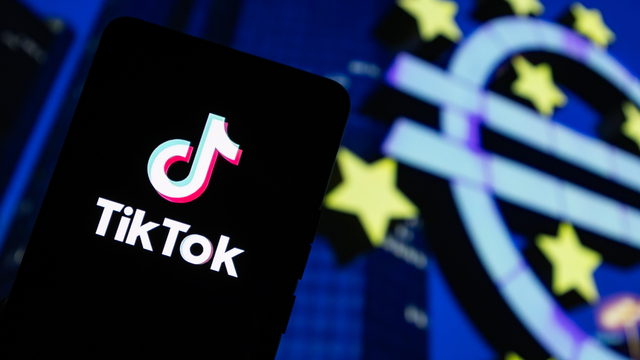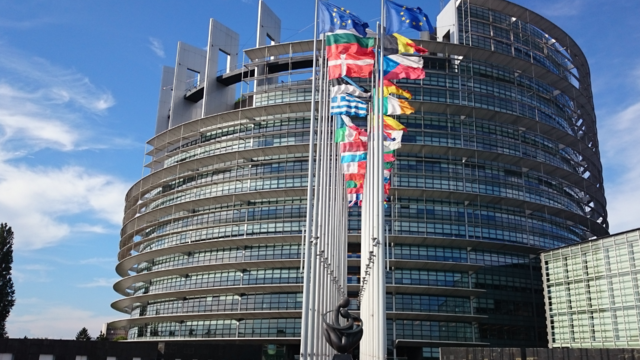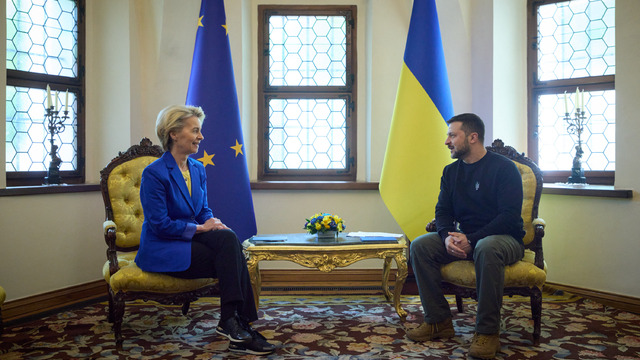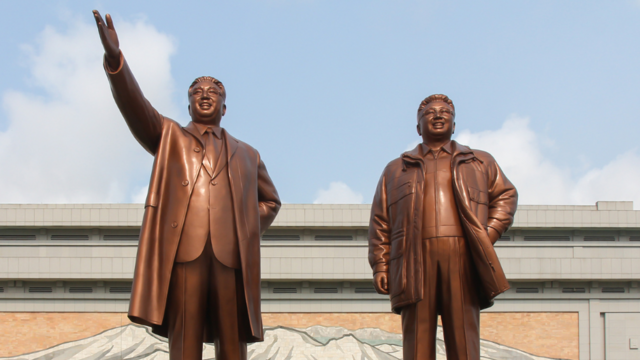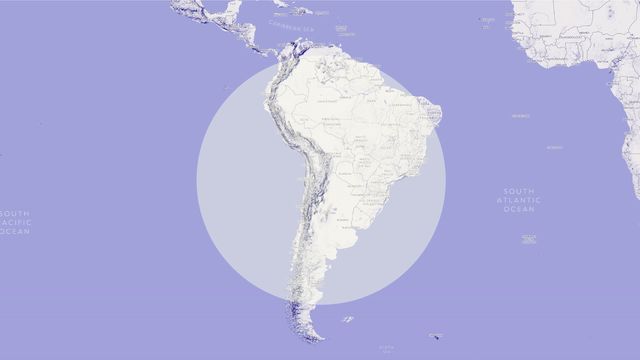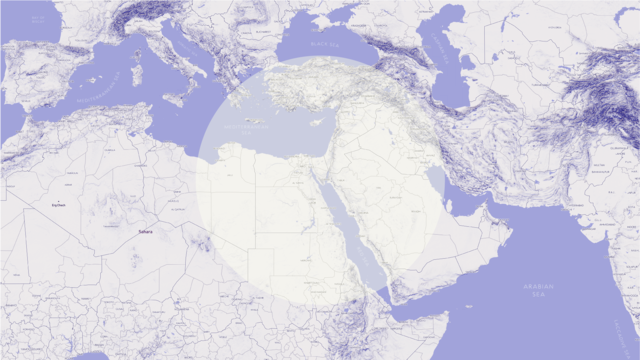The European Union must effectively develop energy relations with global producers and partners
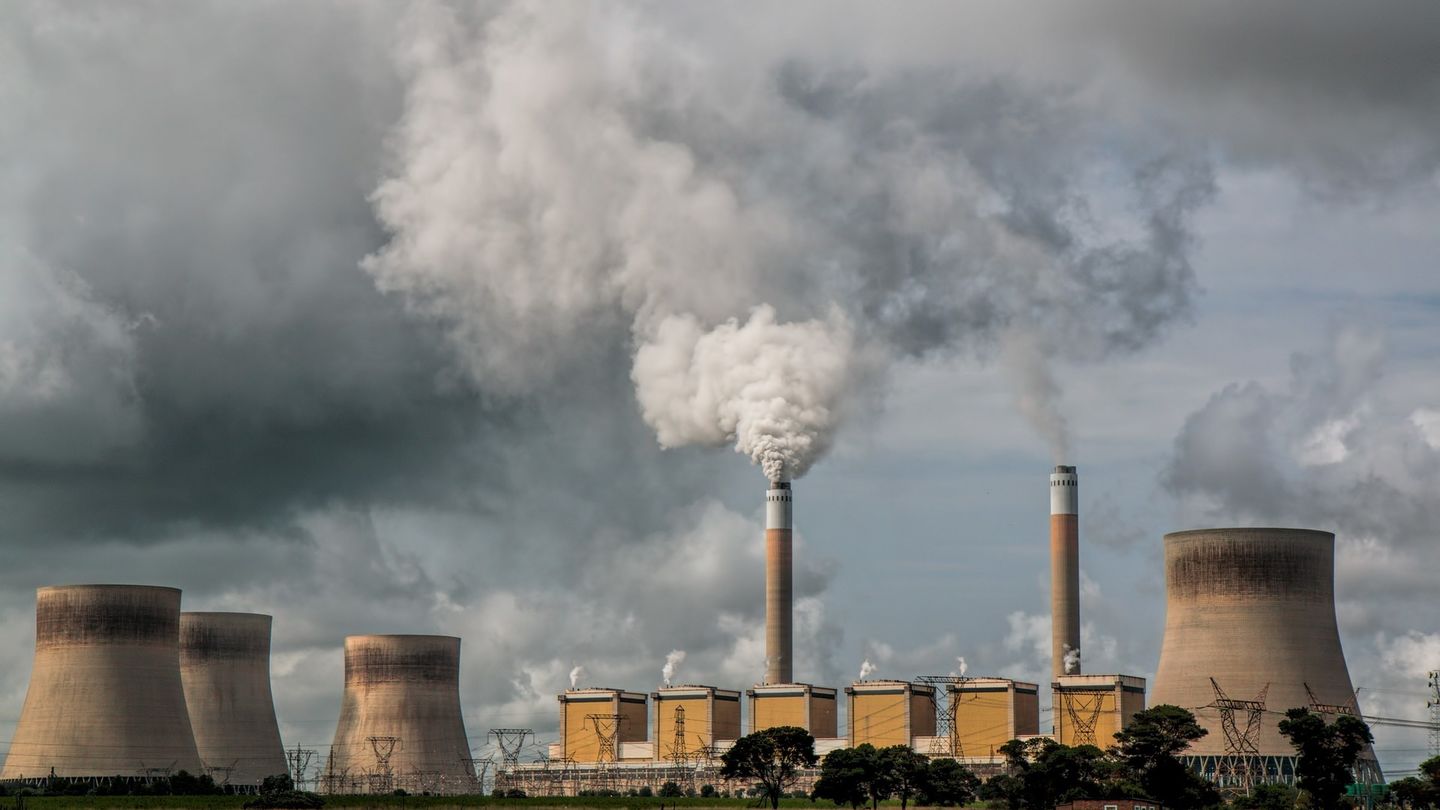
paper
There are almost no oil or gas resources in the EU. To strengthen its energy security, the EU has taken a number of measures in its energy policy. To find out which measures these were read the policy paper of our Centre for Energy Policy. Russia is currently the main energy supplier of oil and gas to the EU. In addition, the EU has been developing “energy relations” with existing and potential energy producers from Asia, the Middle East and North Africa (MENA), sub-Saharan Africa, North America, and Latin America. The European Union should complete the creation of a fully liberalized and interconnected internal market to which energy sources, especially gas, can be delivered effectively from around the world. The EU also has to pursue more efficient relations with its current and, especially, future producers and suppliers of energy.
Introduction
There are almost no oil or gas resources in the European Union (EU). Meanwhile the primary energy consumption in the EU is divided as follows.
• Oil 34.4%
• Natural gas 21.4%
• Fossil fuels 16.7%
• Nuclear energy 14.1%
• Renewable resources 12.5%
The EU is the largest energy consumer after the United States and China. Its exhaustion of domestic energy resources, especially gas and oil, makes its member states dependent on the import of natural resources. According to the European Commission (EC), the EU’s dependence on imports from abroad for all types of fuels is around 53%. The most serious situation is in the area of oil, where the import dependence is about 90%. More positive is the situation with natural gas, where imports cover about 66%; in the case of fossil fuels it is 42%, and in the case of nuclear power, about 40%.
In view of these facts, stable and uninterrupted energy supplies have logically become one of the main pillars and priority objectives of the EU’s energy policy. Since December 2009, when the Lisbon Treaty was adopted, the push for such energy supplies is ositioopean Commission simultaneously seeks to strengthen its r of the EU outcomeamong the policies shared by the EU and its member states. Nevertheless, the process of creating a common EU energy policy and thus strengthening and making greater its energy security has been hampered in the long run by a number of obstacles of a security, political and/or economic nature. To ensure energy security the EU, or more specifically the European Commission, adopted a number of important measures within the framework of the EU’s energy policy.
Simultaneously, the European Commission has been seeking to strengthen its position at the expense of the sovereignty of the member states at the level of both the internal and the external dimension of the EU’s energy policy. The EC’s rising significance and its stronger role as an actor in the EU’s international energy relations is demonstrated, among other things, by the fact that the EC requires a much greater involvement for itself in the creation of intergovernmental energy treaties between member and nonmember states. At the same time, the position of the High Representative of the Union for Foreign Affairs and Security Policy, whose agenda also included the question of energy in the EU’s external relations, was set up by the Lisbon Treaty in December 2009. Five years later the new position of the Vice-President of the Commission for the Energy Union was created, indicating clear ambitions to ensure a strong negotiating position for the EU, or more specifically for the EC, in external energy relations with suppliers. Last but not least, the importance of the external dimension of the Energy Union was recognized in 2015, and its greater engagement in energy diplomacy was recommended.
The main objective of the external dimension of the EU energy policy is primarily to ensure energy security by diversifying external energy supplies, transport routes and suppliers.
In addition, to achieve greater energy security the EU, or namely the EC, within the framework of the external dimension of the energy policy, wants to strengthen and deepen the energy relations and cooperation with the existing partners and potential energy producers. These countries are mainly from Europe, the former Soviet Union area, Asia, the Middle East and North Africa (MENA), sub-Saharan Africa and North and Latin America, and the relations with them are at both the bilateral and the multilateral level.
The following policy paper, which is the pilot output of the new Center for Energy Policy of the Institute of International Relations, is focused primarily on the external dimension of the EU’s energy policy and security in regard to both currently existing and potential suppliers, and secondarily on the internal dimension of the energy policy and security of the EU and the selected regions. Within this context it should answer the following questions:
(1) What is the energy potential of the selected regions?
(2) What is the significance of these regions for the EU’s energy security?
(3) What institutional form do the EU’s energy relations with the selected countries and regions have?
(4) What are the opportunities for and barriers to the EU energy cooperation with the selected countries and regions?
EU energy security and the importance of Russia and Central Asia
1) The energy potential of Russia and Central Asia for the EU
According to British Petroleum, Russia has the second largest gas resources in the world (17.3% of the world’s total gas resources), right behind Iran. The Russian Federation (RF) exports natural gas primarily to Europe, which accounts for over 80% of the total Russian gas exports. In addition, around 6.4% of world oil reserves are on the territory of Russia. Also in the case of oil, the main export destination for Russian oil is Europe, which receives about 64% of Russia’s total oil exports. Russia is thus a key supplier of energy resources to EU countries, including the Czech Republic. At present, the Russian Federation provides around 40% of EU gas imports, 30% of EU oil imports and 25% of EU coal imports. Nevertheless, the current geopolitical tensions can significantly affect the mutual business cooperation and thus jeopardize the EU’s energy security and the Czech Republic’s too.
Russia also has a major influence on energy policy in the post-Soviet area, including Central Asia and the Caspian region, even though in Central Asia and the Caspian Sea there are significant oil and gas reserves. The largest oil reserves of Central Asia are located mainly in Kazakhstan (about 1.4% of the world’s oil reserves), and the largest oil reserves of the Caspian Sea are located in Azerbaijan (about 0.4%) (if we do not count Russia and Iran). For the Central Asian countries, in the case of oil, the EU or Europe is the main export destination. An even more favorable situation is in the case of natural gas, as Turkmenistan has about 9.4% of the world’s gas reserves, Azerbaijan and Uzbekistan both have around 0.6% and Kazakhstan owns about 0.5%. These countries are major exporters of gas, and they mainly export it to China (in the case of Turkmenistan) and Russia (in the case of Kazakhstan). At the same time, these countries are potential gas suppliers to the EU market.
2) The energy relation of the EU, and Russia and the countries of Central Asia
Although the EU-Russia energy relations can be considered strategic, the EU is looking at its energy dependence on Russia with concern (especially in the context of previous energy disputes and the escalation of the Ukrainian crisis) and thus strives for diversification. Another issue is the lack of a comprehensive energy policy towards the RF. On the one hand, Germany and its corporations actively support the construction of the new Nord Stream II gas pipeline. On the other hand a number of East European member states and the EC are taking positions against this project. The EU-Russia energy relations are also influenced by several geopolitical events. One such event is the adoption of new anti-Russian sanctions by the USA. The sanctions are contrary to the interests of a number of European corporations and may have a negative impact on the EU’s energy security. But there are also other issues that politicize the Russian-European energy relations. For example, the European gas market has been undergoing a transformation. Both parties are harmed by the new developments in the long term, and therefore the EU-Russia Energy Dialogue was established in 2000, and in 2013 it led to the creation of the Roadmap for Energy Cooperation Until 2050. However, after the events in Ukraine, this platform practically ceased its activities.
Similarly, the energy cooperation between the European Union and the countries of Central Asia and the Caspian region is also complicated, in particular the cooperation with Azerbaijan. The EU’s energy relations with the Central Asian states are governed primarily by the Strategy of the EU for Central Asia, which was signed in 2007 and revised in 2015. In addition, the EU has signed bilateral memorandums with some Central Asian countries – e.g. with Kazakhstan, Turkmenistan and Azerbaijan. All of these countries are part of the 2004 Baku Initiative, where the energy issue plays an important role. The EU has been allowing for long-term supplies of gas from these countries, particularly deliveries from Kazakhstan, Turkmenistan and Azerbaijan for some diversification projects within the so-called Southern Gas Corridor. However, there were no deliveries of gas from these states to EU countries to date.
The EU and China’s energy security
1) The energy potential of China
Another strategic subject of this research is the People’s Republic of China (PRC), which has 1.5% of the world’s oil reserves, 2.9% of all natural gas reserves and 21.4% of all global coal reserves. However, the PRC is one of the world’s largest consumers of primary energy sources. China is the second largest consumer of oil (after the US) and the third largest consumer of gas. At the same time, half of the world’s coal consumption belongs to the PRC. Today, the PRC, along with the US, has the largest strategic oil reserves, with China’s national oil companies, which are supported by its government, trying to deepen their relations with key world oil producers. The PRC also plans to launch its own future petroleum market, and it has been considering selling its oil for Chinese yuans instead of US dollars. Thus, the EU has to count on the future growth of the PRC’s influence on the energy market.
2) Energy relations between the EU and China
It is in the interest of both the PRC and the EU to ensure stable global energy markets, and thus they should cooperate in this respect. Another reason for their mutual cooperation is the fact that the PRC is also the world’s largest producer of greenhouse gases. Thus in the area of climate change, there are opportunities for deepening the cooperation between the PRC and the EU. An example of a platform for the cooperation between the two largest primary energy consumers is the EU-China Energy Dialogue.
The EU’s energy security and the importance of the Middle East and North Africa
1) The energy potential of the MENA countries for the EU
Of all the regions surveyed, the Middle East and North Africa (MENA) region has the largest oil and gas reserves. Nearly 60% of the world’s oil reserves are located in the MENA. The primary strategic country in this region is Saudi Arabia, which has 15% of the world oil reserves. But other MENA states also have significant oil reserves. The European Union imports about 20% of its demanded oil from the Middle East. The largest MENA oil suppliers of the European Union are Saudi Arabia and Iraq, both of which account for slightly less than 8% of its oil. In North Africa, there are significant oil reserves as well, mainly in Libya (2.8% of the world oil reserves) and Algeria (0.7%), which at the same time export oil to the EU countries; they account for 2.39% and 2.89% of the EU oil imports, respectively.
The MENA region is also significant in terms of gas fields (roughly 40% of the world reserves). In this respect, the most significant countries are Qatar and Iran, with 13% and 18% of the global gas reserves, respectively. While Iran is not one of the largest gas exporters for the time being, gas exports from Qatar represent about 10% of the world market. From the Middle East, mainly from Qatar, the European Union imports natural gas in the form of liquefied natural gas (LNG), and this accounts for about 47% of EU LNG imports. In North Africa, Algeria and Libya are the EU’s main gas partners, supplying about 8% and 1% of the EU gas imports, respectively. In addition, Algeria also exports natural gas in the form of LNG into the EU (accounting for about 26% of the EU imports of LNG).
2) Energy relations between the EU and the MENA countries
The EU’s energy relations with the MENA countries are primarily developed on a multilateral level – for example, within the framework of the Union for the Mediterranean (UfM) from 2008 and the cooperation of the Gulf Cooperation Council (GCC) and the EU based on the cooperation agreement from 1988. Furthermore, energy is an important topic of the EU cooperation with selected MENA countries under the European Neighborhood Policy of 2004, which was revised in 2015. In addition, the EU is developing bilateral energy relations with a number of Middle East countries such as Iraq, Iran, and Israel, among others. Similarly, the EU is building its energy relations with North Africa; for example, it is building those with Algeria on the basis of the EU-Algeria political dialogue on energy from 2015.
At the same time, MENA, from the perspective of energy security and future gas supplies, is an unstable region owing to its civil wars. There are also a number of terrorist organizations in the MENA area, including two global ones, al-Qaeda and the Islamic State. One of the main priorities of the latter one is to attack the energy sector and transport infrastructure, so that it would pose a further threat to potential new oil and gas pipelines to Europe. Last but not least, most MENA countries are dominated by non-democratic regimes, and building a long-term cooperation with them is morally and practically problematic.
EU energy security and the importance of sub-Saharan Africa
1) The energy potential of sub-Saharan African countries for the EU
In terms of energy security another very interesting region for the EU is sub-Saharan Africa. This has been the case since the beginning of the 20th century, when European societies began to extract oil there. In the course of the 20th and 21st centuries, for many African countries, oil became the main source of revenue from foreign trade and, in some cases (e.g. Nigeria), even the main source of all state revenues. Sub-Saharan Africa is home to around 4% of the world’s oil reserves, with Nigeria (2.2%) and Angola (0.7%) having the largest stocks. The EU receives more than 10% of its oil imports from sub-Saharan Africa. Nigeria and Angola are its main oil suppliers from the region, providing slightly less than 6% and 2.62% of the EU’s oil imports, respectively. As for gas, about 3.28% of the world’s gas reserves are in sub-Saharan Africa, with Nigeria, again, having the largest supplies in the region and exporting gas in the form of LNG to the European Union (accounting for about 10% of the EU imports of LNG). However, the large dependence of sub-Saharan African countries on exports of raw materials is linked to a number of risks that can easily result in various forms of political violence, including civil wars. Sub-Saharan Africa, on the one hand, is an opportunity for diversification for the EU; on the other hand, the shortsighted EU energy policy towards it can cause a number of problems.
The great potential of this region for the EU lies in its geographical proximity and the already mentioned large reserves of oil and gas, but also uranium (the region has just slightly less than 20% of the world’s uranium reserves) and other commodities needed in the energy sector. The region’s oil and gas production will continue to grow as the efficiency of its mining and the number of newly found deposits will increase. This will be the case for both the oil and gas owner countries (Nigeria, Angola and Sudan), and the countries that so far still have not extracted or exported these commodities (Uganda, Tanzania, South Africa, Mozambique, etc.). In spite of the current unfavorable conditions due to the low prices of natural gas and oil on international markets, mining companies have invested a lot of money in exploration of African bearings and that’s why roughly half of the top 20 newly discovered stocks are on the African continent.
2) The energy relations between the EU and sub-Saharan African countries
The potential of the information above is to be seen in the context of the history and ties that have arisen between Europe and Africa in times of colonialism, but also afterwards, when the “African question” (generally the question of the European Community’s [EEC] relationship with the developing countries of Africa, the Caribbean and the Pacific [the ACP countries]) was a very important area of EEC/EU external policy. This is still the case today, when the cooperation in sub-Saharan Africa is perceived as one of the priorities not only in the area of economics (EPA), but also in the area of security (the fight against terrorism or illegal migration). Equally important is the energy cooperation, where the security of oil and gas supplies and access to energy, together with the development of renewable energy sources for energy generation and energy efficiency, are among the main themes of the Africa-EU Energy Partnership of December 2007 as one of eight areas of the strategic partnership between the EU and Africa based on the Africa-Europe Joint Strategy.
However, the importance of sub-Saharan Africa for the EU is due to not only the mutual relations, but also external influences. These include, in particular, the 2008–2009 gas crisis, which showed the need to diversify EU energy sources, and the so-called “new scramble for Africa”, in which European countries compete with new regional powers (the PRC, Brazil, India and Russia) not only for access to African markets, but also for raw material resources and overall political influence, which is directly related to Europe’s security in the wider sense. In this context, it is also necessary to highlight the sharp increase in the African population, which is expected to be double what it was in 2010 by 2050.
EU energy security and the importance of North America (the US and Canada)
1) The US and Canadian energy potential for the EU
The United States also has a great potential in terms of energy, as has been shown by previous policy papers devoted to the US-EU energy relations. There are about 78 billion barrels of oil and 17.6 billion cubic meters (bcm) of shale gas in the US that are technically recoverable. With new mining methods, the US has become the world’s largest producer of natural gas over the course of ten years, becoming a net exporter and having the potential to become an important “artery ” for the flow of gas across the world. A similar trend can be seen in the shale oil extraction industry. Thanks to its massive shale oil production, the US has managed to reduce the volume of imports needed to meet the domestic consumption. The rising oil production from shale in the US has so far had an indirect impact in the form of low prices. These are by-products of the OPEC countries’ strategy to eliminate US shale oil producers and maintain their (the OPEC countries’) global influence. US miners have successfully cut the costs of the shale oil production and kept it at prices that were unthinkable two years ago, as they would not have been sufficient for the mining industries to survive at the time, and this pushes the US to a greater energy independence. The low prices are welcomed also in other oil importing countries, while the US has been reducing the influence of exporters on the formation of its foreign, military and economic policies. Nowadays, the USA exports mainly coal to the EU, and this coal accounts for around 20% of the total EU coal imports. From 2016, the US also exports oil, which accounts for 1% of the EU oil imports, and natural gas in the form of LNG in the order of several billion cubic meters of gas to the EU.
Another increase in unconventional mining, this time from oil sands, can be seen in Canada, which has supplies of more than 166 billion barrels of oil in petroleum bitumens in the province of Alberta and approximately 16.2 bcm of shale gas. However, Canada only exports 3.4 million tons of coal and less than 13 million barrels of oil to the EU, which is 1.4% and 0.34%, respectively, of the total imports of these commodities into the EU.
2) The energy relations between the EU, and the US and Canada
Since 2009, the main institutional framework coordinating the US and EU energy policies is the so-called Transatlantic Energy Council (the EU-USA Energy Council). Another platform that could adjust the existing energy market, could be the planned Transatlantic Trade and Investment Partnership, but its closure is threatened by the emergence of the new US administration. In addition, there is the long-standing support for greater EU energy security in the US discourse, especially due to the EU’s dependence on Russian gas. The same is true of the new US president, Donald Trump. According to the energy plan he has announced, as well as many of his public statements, he has also supported European energy diversification and the development of US gas exports in the form of LNG to the European market. The development of exports is thus helped by the visible political will on both sides of the Atlantic. On the US side (apart from the aforementioned verbal support) this is demonstrated, for example, by the recent abolition of the ban on oil exports that had been in effect since the 1970s, the adoption of a law regulating the acceleration of gas exports, and an increase in the export capacity of LNG. On the EU side, we can see the following factors as opportunities to increase the EU’s LNG imports from the US: the declining domestic gas production, favorable legislation, a fully liberalized and interconnected market, and, above all, the efforts to increase energy security, i.e. through diversification of the gas supply. But there are also many obstacles. In the case of the US, there are still the problems of the insufficient LNG export capacity and low gas prices. On the EU side, the obstacles are the underdeveloped transport infrastructure and a forecast predicting stagnation or even a fall in the gas consumption in the EU.
Canada is strongly commercially integrated with the US, and it is not possible to expect a significant increase in its trade with the EU by the end of the decade. The energy relations between the EU and Canada are primarily regulated by the Strategic Partnership Agreement from the end of 2016, where both sides recognize the importance of the energy sector for economic prosperity and international peace and stability. In relation to energy, the parties maintain a high-level dialogue and continue to work together bilaterally or multilaterally. The energy dialogue was the subject of a joint energy conference at the end of 2016, which sought to find the two actors’ common interests in energy policy. In addition, the EU-Canada energy cooperation is also regulated by the Comprehensive Economic and Trade Agreement (CETA) of October 2016.
Energy security of the EU and the importance of Latin America
1) The energy potential of the Latin American countries for the EU
Finally, there are also significant areas in the Latin American region with mineral raw material reserves. Around 19.2% of the world’s oil reserves and about 4.1% of the world’s gas reserves are located there.
Providing certain conditions, such as building the necessary infrastructure, these stocks can serve as a possible alternative for the EU as it aspires to diversify its energy sources in the longer term. The Latin American countries provide slightly less than 2% of the Union’s imports of crude oil, with Brazil (0.85%) and Venezuela (0.51%) as the standout providers in this respect. At the same time, the European Union also imports natural gas in the form of LNG from the Latin American countries, mainly from Peru, which provides around 2 bcm of gas, i.e. slightly less than 5% of the Union’s imports of LNG.
Even though the energy consumption of the Latin American states has been growing significantly, and most of them have been forced to import energy into their territory, the presence of foreign companies and capital can lead to a significant increase of the Latin American region’s energy value on a global scale due to the associated increases in investment in research and infrastructure.
Across the whole of Latin America, but also within individual Latin American countries, there are profound economic and political differences, as a result of which Latin American states have long been among the countries of the world characterized by extreme inequality (for example, according to the GINI index). One reason for this is the states’ unequal access to mineral raw materials, which are extremely important for shaping the policies and economies of local administrations. Even though Latin America is rich in resources such as oil and gas, looking at the distribution of these raw materials, we find that a significant part of their reserves are located in only a few countries (for example, Venezuela owns about 91% of the oil reserves and 77% of the natural gas reserves in South America).
2) The energy relations between the EU and the Latin American countries
The varying levels of the individual Latin American states entail a number of problems associated with the distribution of the raw materials to other countries within and outside the region. The problems are further strengthened by the protectionism of the populist left-wing governments which have been successful in countries such as Venezuela, Brazil, Bolivia, Ecuador, etc. in recent decades. In contrast, however, countries such as Peru, Colombia, Chile or Mexico have been developing cooperations not only with the states in the region, but also with European ones – to give an example, they did so through association agreements within the Pacific Alliance. This group, which was set up in 2011, shows its openness to new partners, including in the energy sector. The assertive rhetoric of the United States, currently the closest business partner of the Latin American states, can also contribute to further strengthening the relations of this alliance with the EU. For EU countries, what has a significant potential in the region is particularly the presence of gas in Latin America, and its efforts to introduce technologies that allow its liquefaction. To date, the only LNG exporter in the region is Peru, but more Latin American countries should become LNG exporters in the future (depending on the development of their domestic events and the development of LNG prices on the world market).
Conclusions and recommendations
The EU countries have only very limited and negligible oil and gas reserves. While the energy consumption in the EU is expected to increase and, on the other hand, the existing oil and gas stocks in the territories of the member states are expected to be gradually depleted, the EU’s import dependency in terms of energy, in particular oil and gas, will logically continue to increase. The EU will therefore have to pay increased attention to energy security in both the internal and, above all, the external dimension of its energy policy.
In this respect, the EU should, in the first place, complete a fully liberalized and interconnected energy market that would be able to import gas, oil and LNG from all over the world, while at the same time making it possible to transport these energy commodities from the coast to the inland. Currently, the EU should also develop closer energy relations and cooperations with its existing suppliers and partners while at the same time preparing the necessary conditions for and streamlining negotiations with potential producers about the supply of energy resources to the EU. However, the energy relations are not just a one-sided process, so besides the EU, the other side(s) in the negotiations should also take the necessary measures to improve the energy cooperation.
1) The energy relations between the EU, and Russia, the states of Central Asia and Azerbaijan
• The European Union must depoliticize its energy relations with Russia. The aim should be to create relations between the two actors that would be governed by a functionalist logic of mutual cooperation designed to prevent the geopolitical use of energy tools.
• While deciding about new infrastructure projects (such as Turkish Stream or Nord Stream II) Russia should be more transparent and guarantee that these projects are in line with European law.
• Along with this, Gazprom should adhere to the commitments it has made in the framework of the settlement of the European Commission’s antitrust investigation and should also increase the importance of spot markets in its exports to the EU.
• The European Union should engage in multilateral negotiations on the status of the Caspian Sea with all the coastal states, as, for the time being, the involved actors do not allow for the construction of the proposed Trans-Caspian pipeline to transport Turkmenistan’s natural gas to European markets.
• The Central Asian countries should deepen their cooperation with the European Union in the field of energy efficiency.
2) EU-China energy relations
• The European Union must identify those areas in which European firms are competitive and can establish mutually beneficial cooperation with China. At the same time, exchanges of experience in the regulatory area can be deepened, which can contribute to increasing energy efficiency.
• China should ensure a greater transparency of energy indicators in its cooperation with the EU, and the creation of a coordination mechanism for the release of strategic oil reserves in the event of crises.
3) EU-MENA energy relations
• The European Union should create the position of a rotating Union Energy Security Ambassador, who would work for a certain period of time in each MENA country, in order to create favorable conditions for negotiations on energy supplies and investments in the energy sector.
• The MENA countries, in cooperation with the EU, should strive to gradually improve the security and political situation in the region, which goes hand in hand with ensuring the stability and security of exports of energy supplies from the region to the EU.
4) The energy relations of the EU and sub-Saharan Africa
• As a part of its foreign and security policy, the European Union should continue to strengthen its common strategies, attitudes and actions towards sub-Saharan Africa, with an emphasis on preserving the internal stability of sub-Saharan states, especially those that are major exporters of commodities important for energy-related matters.
• The European Union should create frameworks for cooperation with the private sector in deepening African mining capacities.
• African states should collaborate more deeply with the EU to transfer knowledge in the field of state administration, mineral management and forms of redistribution of resources.
5) EU-US and EU-Canada energy relations
• The European Union should build a sufficient LNG import capacity, including the connected fully integrated market, and improve its bilateral energy cooperation with the United States through the elimination of economic, technical and political obstacles.
• The European Union should pursue a bilateral dialogue with Canada in order to prepare the best possible conditions for potential supplies of Canadian LNG (in the next decade).
• Maintaining the future growth of natural gas extraction in US and Canadian territories is conditioned by rising sales of this (over)produced commodity on foreign markets. The US and Canada should therefore seek to occupy part of the EU market through their LNG supplies (but they should still seek to occupy other markets as well).
6) The energy relations between the EU and Latin America
• For developing its cooperation with the Latin American countries as potential energy partners, the European Union should monitor their internal development and support their democratic development, along with measures leading to the loosening of the local market and the creation of a functioning legal framework.
• In order to increase the volume of raw materials that Latin American states could provide for European states in the future, the European Union should support the development of further strengthening of energy gains from renewable sources, which the Latin American region is wealthy in.
• The Latin American states, in their relations with the EU, should seek to invest in research and infrastructure building, as the infrastructure, due to the frequent unwillingness of the populist governments to reinvest profits from mining back into the energy industry, is largely outdated or totally absent in many cases.
